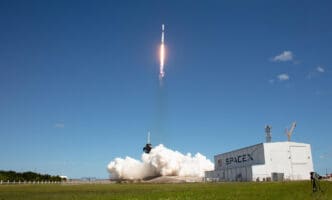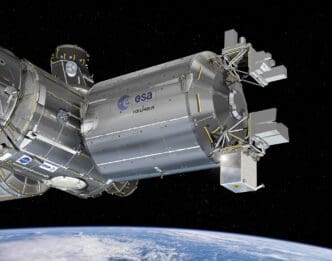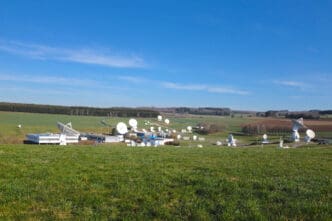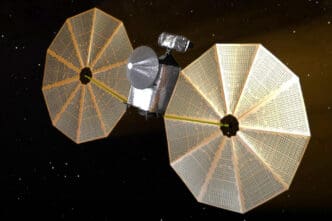Have you ever imagined a world where spacecraft make decisions without human intervention? NASA is turning this vision into reality. This groundbreaking effort is shaping the future of space exploration, providing tools for spacecraft to interact autonomously. Let’s delve into this fascinating development.
NASA’s Distributed Spacecraft Autonomy (DSA) is a technology marvel that allows spacecraft to work together autonomously. This innovation marks significant milestones, paving the way for new explorations. DSA represents the future of intelligent and collaborative space missions, pushing boundaries beyond human capability. Join us as we explore how NASA’s tech firsts are transforming space travel.
Unveiling Distributed Spacecraft Autonomy
The Distributed Spacecraft Autonomy (DSA) initiative by NASA is a game-changer in the realm of space exploration. This revolutionary technology allows individual spacecraft to make autonomous decisions while cooperating to achieve shared objectives, all without human input. Think of it as giving spacecraft a brain to operate independently yet collaboratively.
DSA’s capabilities were tested during the recent Starling mission, which marked the first fully distributed autonomous operation of multiple spacecraft. The achievement showcased the technology’s potential to redefine space operations, making missions more efficient and less reliant on ground control.
Another first for DSA was the use of space-to-space communications for autonomous information sharing. This breakthrough allows spacecraft to exchange status updates on their own, leading to faster, more coordinated responses to mission challenges. The implications of this are monumental for future exploratory missions.
The Benefits of Autonomy in Space
Autonomous spacecraft can vastly improve the efficiency and success of space missions. By working independently, these spacecraft can explore more areas and gather data more quickly than traditional, ground-controlled missions.
DSA’s ability to enable spacecraft to work autonomously can reduce costs, as less human oversight is needed. This means more resources can be allocated to mission planning and scientific analysis, potentially accelerating our understanding of the universe.
The autonomy also means spacecraft can make real-time decisions in response to unexpected events, improving mission resilience. This adaptability is key to coping with the unpredictable elements of space exploration.
Milestone Achievements
DSA’s journey wasn’t easy. Every success came through rigorous testing and iteration.
The technology’s firsts include not only autonomous operation and communication but also managing complex mission objectives. The achievements signify a leap towards smarter space exploration.
These accomplishments pave the way for NASA’s future missions. They could revolutionize the way we conduct science and exploration, making it more dynamic and responsive.
Challenges Overcome
Developing autonomous systems wasn’t without its hurdles. Engineers faced numerous challenges, from software bugs to communication delays.
To overcome these, NASA implemented intensive testing protocols and developed sophisticated algorithms. These measures ensured the technology could handle the demands of autonomous operations in the harsh environment of space.
The team’s perseverance led to refining the tools and strategies needed, marking a triumph over the challenges that initially seemed insurmountable.
Looking Ahead to Future Missions
With DSA proving its concept, the focus now shifts to integrating this technology into more missions. This advancement will help tackle more intricate scientific inquiries in space.
Engineers are enthusiastic about the potential applications of DSA, from planetary exploration to monitoring cosmic phenomena, all through autonomous means.
These applications could unlock new possibilities for science and discovery. The idea of a network of intelligent spacecraft collaborating autonomously is becoming a thrilling reality.
The Impact on Science and Exploration
Autonomous spacecraft bring new opportunities for conducting science in space. With the ability to decide and act independently, they can handle more complex and time-sensitive research tasks.
The self-governing nature of DSA-equipped spacecraft makes them ideal for missions on the fringes of our solar system, where communication delays with Earth can hinder traditional mission operation.
This innovation is truly a leap forward for exploration. By bypassing human limitations, these technologies democratize the universe, creating richer scientific returns.
Collaborations and Support
NASA’s triumphs with DSA highlight the importance of collaboration across sectors. The agency worked hand-in-hand with academic partners and industry experts to bring this technology to fruition.
Such partnerships facilitated the exchange of knowledge and resources, bolstering the development of these pioneering systems.
The success underscores the value of teamwork in advancing space technology and achieving what was once thought impossible.
Technological Foresight
The foresight involved in developing DSA is remarkable. NASA anticipated future challenges and needs by investing in autonomy.
Through strategic planning and innovative thinking, DSA came to represent a quantum leap in space operations. It stands as a testament to the agency’s commitment to continuous improvement and advancement.
By anticipating the future, NASA is not only making today’s missions more efficient but is also laying the groundwork for the explorers of tomorrow.
What Lies Beyond
The journey doesn’t end with DSA; it’s just the beginning. NASA continues to explore ways to enhance and expand autonomous technology.
Future projects might involve more sophisticated autonomy, even artificial intelligence, playing a significant role in spacecraft operations.
As technology evolves, the potential to navigate and understand the cosmos grows exponentially, promising a future where space exploration is boundless.
Spacecraft autonomy is reshaping our approach to space exploration. With NASA leading the charge, the possibilities are limitless. The innovations we see today will pave the way for the discoveries and marvels of tomorrow.







